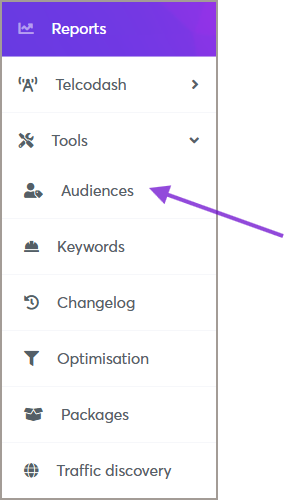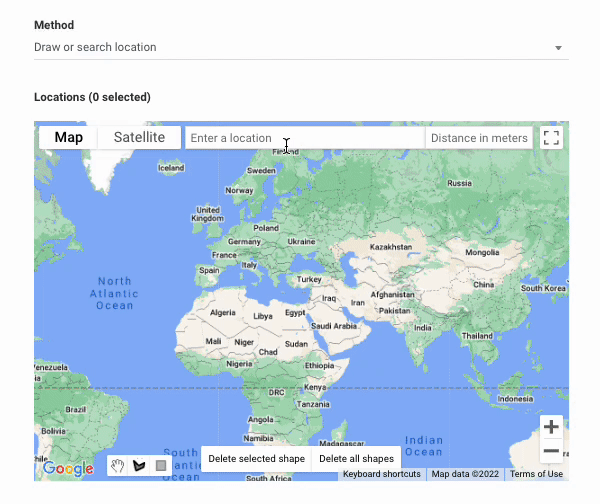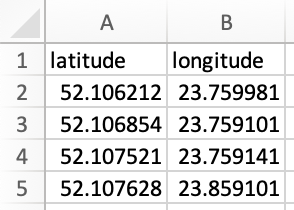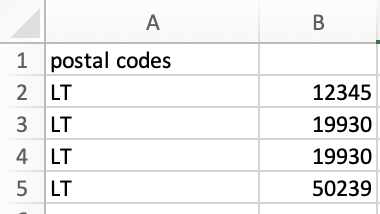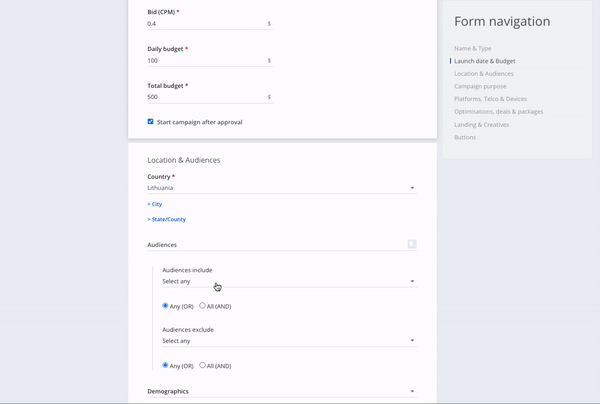Retargeting Geolocation Audience
What is geolocation?
Geolocation is the process of determining a user's or computing device's geographic location using a number of data collection techniques. Eskimi determines the geographic location based on the GPS coordinates while supporting 3 geolocation audience creation methods: simply drawing or searching for the location, uploading GPS coordinates, or postal codes.
Why geolocation?
Retargeting geolocation audience targeting allows reaching highly targeted audiences within a specific location. The data is collected based on the location of devices (GPS) within a specific location and time. The creation of the location and time frame of which devices are being collected and aggregated into that actionable custom audience allows target users from specific locations, even after they have left that geolocation.
How to create a Geolocation Audience:
Step 1: Accessing the Audience Management Feature
-
Log in to your Eskimi DSP account.
-
Click on Audiences to access the audience management page.
Step 2: Creating a New Behavioral Audience
- On the Audiences page, click the Add Audience button (top right corner).

-
A new window will appear—fill in the required information:
-
Audience Name: Enter a descriptive name for your audience.
-
Type: Select Retargeting (geolocation) as the audience type.
-
Date: Choose date interval - here you indicate how long the audience will be collected
- Method: Choose the Method of data collection.
-
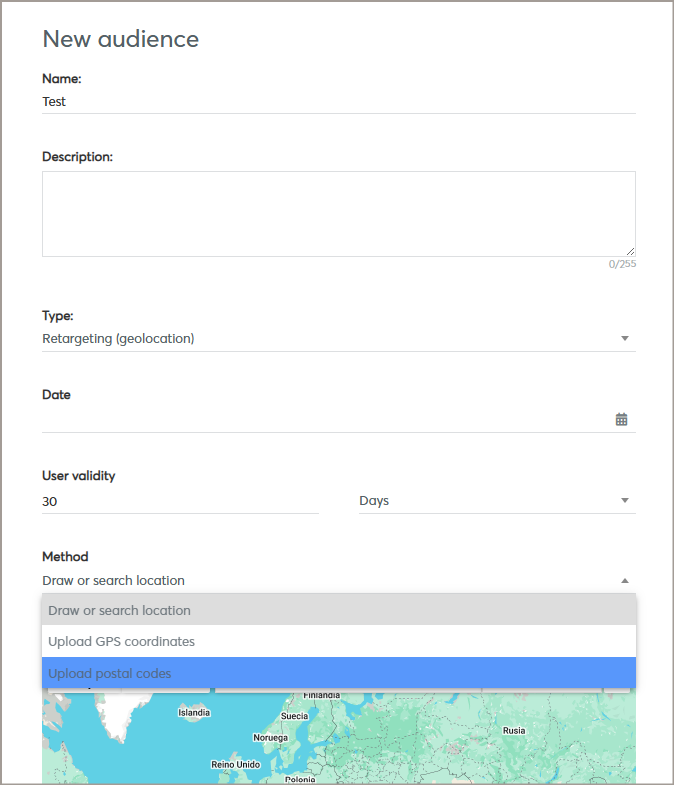
A geolocation audience can be created using 3 methods:
- Drawing or searching for the specific location - you can either type in the specific location and indicate the radius (in meters), or draw the shape covering the targeted location
- Uploading GPS coordinates - this method requires uploading a CSV file with latitude in the first column and longitude in the second column
- Uploading postal codes - this method requires uploading CSV file with a 2-letter code in the first column and the postal code in the second column.
While creating a geolocation audience, it is required to indicate:
- name of the audience
- description (optional)
- type of the audience - Retargeting (geolocation)
- date (the period of time indicated for how long the audience will be collected)
- user validity (the period of time for how long the user is targeted. E.g., 30 minutes - meaning that after 30 minutes, the user that was seen in the specific location won't be retargeted anymore)
- method (draw or search location, upload GPS coordinates, upload postal codes)
- radius (the targeted location area in meters)
Step 3: Applying Behavioral Audience to a Campaign
Once your Geolocation Audience is created, you can apply it to your campaign:
-
Open the campaign you want to edit.
-
Navigate to the Audience Targeting section.
-
Select the Geolocation Audience you created.
-
Save the campaign settings.
Limitations
- Running specific types of creatives (e.g., VAST or Native) can limit the retargeting of possible users. It is recommended to use standard display banners in formats such as 300x250, 300x600, 320x480, 320x50, etc.
- The more narrow the location targeting is chosen, the fewer users retargeting the geolocation audience will collect. In some cases, 0 users may be collected due to very narrow location targeting or non-compliance with specific conditions (GPS must be enabled in the device, user must browse in the app or website which is reached by Eskimi via oRTB). Therefore, it is recommended to evaluate the location's popularity and size, and based on that, determine the radius.
- As the biggest part of GPS information for geolocation audience will come from users' apps, it might result in a higher reach of apps inventory during the campaign.
- Due to strict iOS privacy settings, most of geolocation audience users will be Android users.
- It is recommended to create the retargeting geolocation audience 2-5 days before the start of the campaign in order to evaluate the campaign's reach and overall potential.
The video below is a representation of retargeting a geolocation audience

